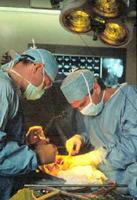 Here are my suggestions for some of the top articles in medicine for August 2012:
Here are my suggestions for some of the top articles in medicine for August 2012:Sanofi Announces FDA Approval for Auvi-Q, First Voice-guided Epinephrine Auto-injector http://goo.gl/4GfPr
Medical Journal of Australia: "Clearly, we overestimate our ability to correctly deploy tests and interpret results" http://goo.gl/q8da8
Drug Resistance Claims Another Gonorrhea Treatment: the oral cephalosporin cefixime http://goo.gl/tR2LW
Social media continues to excel at reaching patients and medical peers http://goo.gl/odKGo
New drugs, procedures, and devices for hypertension : The Lancet http://goo.gl/IbwbL
Data challenge the concept that raising of plasma HDL cholesterol will reduce risk of myocardial infarction http://goo.gl/67eZF
10 Ways to Make EMR Meaningful and Useful http://goo.gl/KimDJ
Tiger snake (Notechis spp) envenoming: Australian Snakebite Project (ASP-13) | Medical Journal of Australia http://goo.gl/YCzRg
Bias in clinical history significantly influenced the accuracy of ECG interpretation http://goo.gl/JjRd6
9 Smartphone Apps to Improve Your Medical Practice http://goo.gl/nUjNP -- 15 Smartphone Apps to Improve Your Practice http://goo.gl/s3dnR
How to Raise Successful (and Happier) Children - NYTimes http://buff.ly/MT4BRr
When metformin alone is insufficient, consider adding a dipeptidyl peptidase-4 inhibitor, linagliptin - Lancet http://goo.gl/bdMkG
Ciprofloxacin for 7 days versus 14 d. in women with acute pyelonephritis: Short courses should be favored - Lancet http://goo.gl/oU3uC
Radiation exposure from CT scans in childhood increases subsequent risk of leukemia and brain tumors - Lancet http://goo.gl/44feV
The articles were selected from my Twitter and Google Reader streams. Please feel free to send suggestions for articles to clinicalcases@gmail.com and you will receive acknowledgement in the next edition of this publication.





